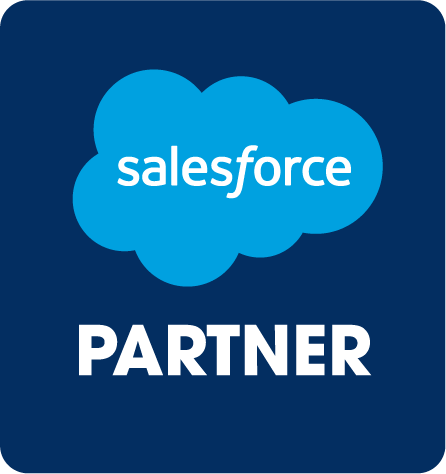
Many Salesforce professionals aspire to become a platform Architect, but the level of work and dedication required to become one of these elite developers can seem daunting if not properly road-mapped. Here, Luke Freeland from the Salesforce consultancy Metillium takes us through it step by step.
The journey from developer to architect is a long, arduous one. It involves continuous learning, developing varying skills, and years of experience.
There are numerous titles on the developer to architect path, but let’s focus on developer to senior developer and finally to architect.
Learn to become a:
Want to maximize your earning potential as a Salesforce professional?
Read our independent Salesforce market report to find out which skills and certifications are valued most by employers in the Salesforce ecosystem.
Read Mason Frank’s Careers and Hiring Guide: Salesforce Edition.


Salesforce Developer
A developer will be creating software, primarily by writing code, typically as part of a development team. These days it’s rare for a new developer to write software alone for commercial purposes.
From my experience, most developers stay at this level for 3-5 years before being promoted to a Senior Developer. Some may progress faster because they put in additional effort and learn faster. Others may fall prey to doing the same thing repeatedly for years.
Developer tasks
- Creating User Interfaces such as forms, reports, and navigational items which are most likely web apps or web sites using HTML, CSS, and Javascript using one or more frameworks such as JQuery, Lightning Framework, and others.
- Creating Apex Triggers to automate complex behaviors and provide complex validation not possible through declarative, point-and-click solutions.
- Troubleshooting and fixing bugs discovered via testing or reported by end users.
- Updating development items in a project management task tracker such as JIRA so the dev team and management know the status of assigned tasks.
- Committing code to source control such as Git and revising it as needed from code reviews.
- Learning programming languages, development tools, one or more operating systems, and starting to learn common design patterns.
Developer prerequisites
The most common path to becoming a developer is to receive a bachelor’s degree in computer science, software engineering, or another software-related field. After which, the individual applies to various employers and finally gets a job.
A less common path is learning to code in high school or earlier and becoming reputable enough to find work. This is possible through various ways such as having family and friends in I.T. who know you and are willing to give you a chance. Another way is promoting yourself somehow such as getting involved in the local development community or open-source projects so people get to know you and see what great work you do.
In Salesforce, the first place to learn something new is Trailhead, Salesforce’s free, online learning system. After that, there are various books, blogs, conferences, classes, the community, and other learning resources to continue learning.
Senior Salesforce Developer
A senior developer has created a lot of software using various technologies and has been in the field for years. The senior developer still writes software but not as much since the focus is changing to other tasks. Senior developers are also usually responsible for technical deliverables such as feature design and mentoring other developers.
Senior Developer tasks
- Create more complex software such as integrations between systems and DevOps infrastructure that is needed to get software from development into production.
- Performs code reviews for other team members to disseminate knowledge and best practices.
- Mentors other developers so they become more proficient.
- Interacts occasionally with other individuals outside the development team such as the business or clients to clarify issues, request needed items, and provide input on technical items.
Senior Developer prerequisites
Becoming a senior developer requires years of experience doing a variety of development tasks and increasingly complex ones. Over time this exposure to various development tasks allows the developer to gain the technical knowledge and business knowledge in order to provide even more value to the organization and to become the expert on various technologies and system features.
In addition to experience, the developer continues learning the underlying technologies, the organization and its processes, and other technologies. This must continue throughout one’s career.
10 ways to become an amazing Salesforce Developer.
Salesforce Architect
An architect is the peak on the technical career track. This person has a great breadth and depth of technical and non-technical knowledge. The architect typically is not a manager and doesn’t have any direct reports. However, the architect is responsible for architecting systems and providing the infrastructure and processes for them.
Architects do the least amount of coding. Their time is spent on other activities.
Architect tasks
- Designs and configures new systems and new features.
- Provides guidance for standards, processes, and governance. Examples: UI Standards, Coding Standards, development processes such as Agile or Waterfall, DevOps infrastructure and release management.
- Evaluates new products, frameworks, and other technologies to determine their viability and fit within the organization.
- Troubleshoots the most-challenging bugs.
- Participates in cross-functional teams as needed.
Architect prerequisites
People become architects through many years of diverse experience. They’ve developed various systems using various technologies usually at various organizations. Architects typically have 8+ years of experience and are well-versed in the prevailing technologies.
With Salesforce, the architect knows Sales Cloud, the platform and its customization options, AppExchange and other Salesforce products, APIs, various vendors, integration options, and frameworks. To accumulate this knowledge, it’s likely the architect works for a consulting partner to get exposed to the different aspects of implementing Salesforce in an organization.
Other Career Options
Going from developer to architect is one career path but there are many career options. One can get into management after starting on the technical side. Another option is consulting by either freelancing or working for a consulting partner.
No matter what job you’re in, continuously learn and grow.


Luke Freeland / Metillium
Luke Freeland is a 12x certified Salesforce Technical Architect and Consultant. He’s also Managing Director and Founder at Metillium Inc., One of the leading Salesforce consultancies in the New York area.

